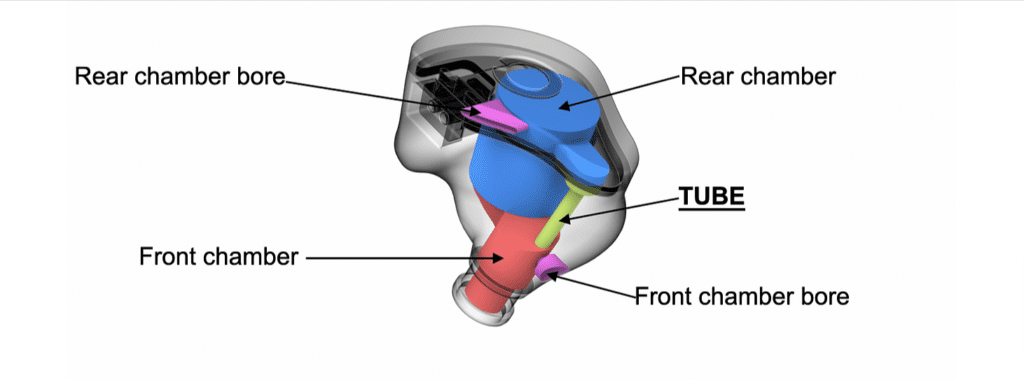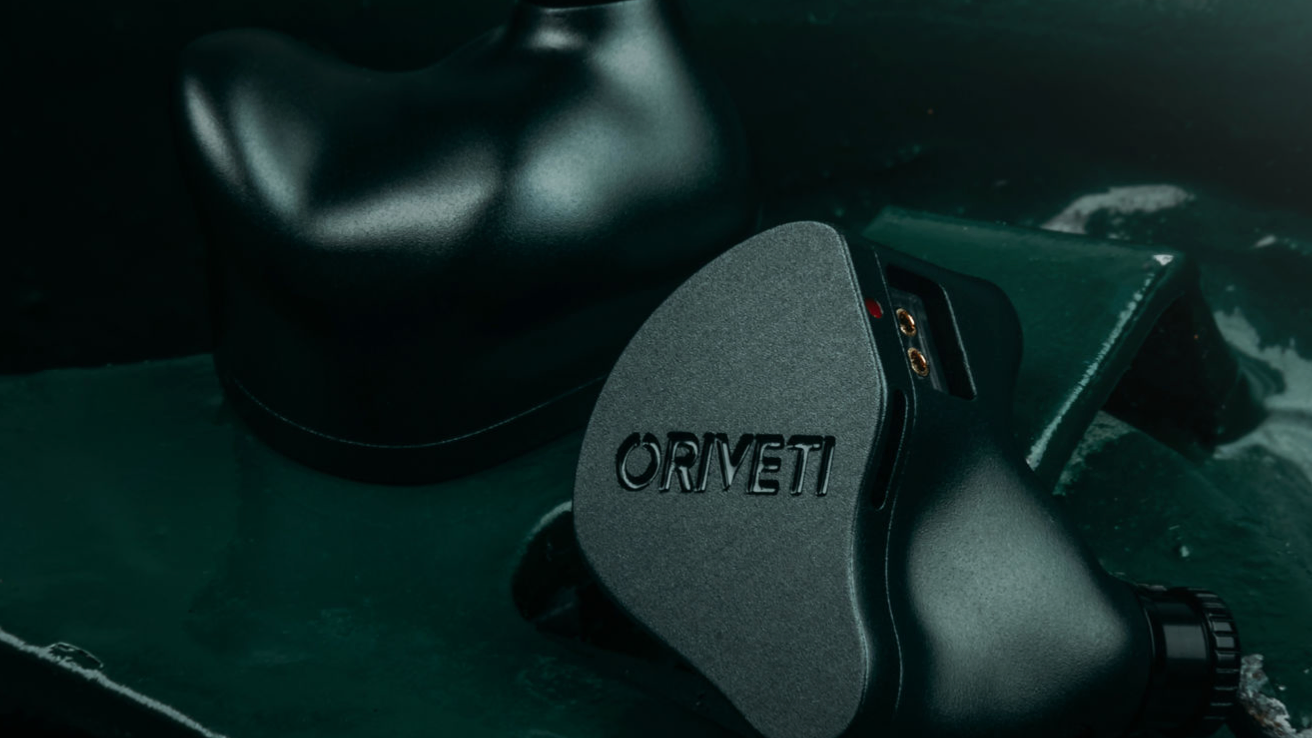Disclaimer: I formally thank Oriveti for graciously providing us with the OD200 in exchange for an honest review.
Pros:
- To date, the best build-quality and machine-finishing on an IEM rivalling TOTL models
- Lavish accessories outclass immediate competition in a similar price bracket
- Ultra-supple cable with swappable terminations (3.5mm unbalanced, 4.4mm balanced and 2.5mm balanced).
- Balanced filter (Black): Top-tier resolution with extensive sparkle and air in the presence region, with little audible distortion in the form of bass bloom.
- Bass filter (Silver): Attenuates the coarser peaks for a smoother and laid-back signature at the expense of unapologetic detail retrieval, with a moderately prominent mid-bass bump and sub-bass elevation.
- Patent-Pending Dedicated Airflow Distribution (DAD) Design creates an expansive stereo-field with realistic imaging accuracy.
Cons:
- The treading on the swappable spouts is not snug enough, which can result in “rattle” and shake during prolonged listening sessions.
- Balanced filter: Upper-mid abrasiveness on synthesizers and artificial sounds, and fairly unforgiving with poorly-mastered recordings.
- Bass filter: Nullifies the balanced filter’s hyper-detailed presentation, with more congested mid-bass bloat causing instruments and voicings to conflict with one another.
Introduction
Decades (more like a decade) ago, Oriveti was the first of few flagbearers laying the foundations in which the Chi-fi industry still stands today. Founded in 2015, Oriveti is one of the first-mover mavericks that shone a spotlight on what China has to offer in the portable audio industry with the cult-classic Primacy, a three-way hybrid touting two balanced armatures and a single dynamic driver. All are housed securely in a full-metal jacket. Rarities such as the Primacy set the scene for Chi-fi’s runaway success.
And yet, the rapacious appetite of emerging enthusiasts has caused the wheels of the Chi-fi sector to spin faster and faster, each revolution shorter than the last. The impetus in which this industry moves is bolstered by hype. Oriveti remains nonplussed by the machinations of the outside world, sticking to its principles of sound engineering (pun intended), letting quality and attention to detail speak for itself. It is precisely their focus on what matters that allows Oriveti to flourish indefinitely into the future.
Today, we’re focusing our attention on the driver-configuration that kickstarted man’s obsession with music with the live band: the dynamic transducer. The OD200 embraces the minimalism and simplicity of a single-piston diaphragm, pushing it to its limit using new air-control technologies they’ve developed in-house (we’ll discuss this later). No crossovers, no novelties: just a single conical-shaped diaphragm.
Price at $199.99, the OD200 is situated in a price category defined by ferocious competition. Today, we professionally review the OD200 and see if Oriveti stacks up, or even surpasses its rivals. The OD200 can be purchased directly from Oriveti’s official website.
Technology
The OD200’s single dynamic driver is fashioned from a BE-coated 9.8mm PET diaphragm for enhanced rigidity and strength, reducing unwanted flutter and audible distortion. What makes the OD200 extremely innovative is its patent-pending dedicated airflow distribution (DAD) system:

Designed to optimise airflow travel, the implementation of a back-chamber and front-chamber bore facilitates the seamless flow of air generated from the compression and rarefaction of the driver flexure, both forwards and backward. The strategically placed bores aid in the egress of built-up pressure in the IEM chambers.
On paper, this engineering schema is reminiscent of the Sennheiser team’s inspiration for the IE series of earphones, integrating 3D-printed cavities and finite structures for improved sonics.
In return, the OD200’s sonic performance should have outstanding treble extension and air, followed by spacious spatial staging and strengthened imaging performance. How this plays out in real-world performance will be determined in the following sections.
Unboxing

The OD200’s packaging is a masterclass in “value”. The OD200 is enclosed in a racing-green-themed jewellery-style box, with a top-down lid and drawer enclosure on the front side. Unboxing the OD200 is a premium experience mimicking TOTL-models multiples in price, with some paling in comparison to what the OD200 has to offer: extraordinary praise for a product that’s priced at a reasonable $199.99.
The OD200 shells can be found seated snugly in a cut-out foam surround, followed by an additional pair of swappable “bass” nozzles. The remaining accessories are located in the drawer enclosure, such as the 2-pin cable with swappable connectors (3.5mm unbalanced, 4.4mm balanced and 2.5mm balanced), a mixture of foam and spinfit-inspired tips (S, M, L), an ear-wax cleaning tool and a genuine-leather case in black, replete with racing-green contrast stitching.
In marketing, first impressions are everything, and Oriveti has nailed the assignment. The OD200 is, in my honest opinion, the best unboxing experience I’ve had the privilege of partaking in my tenure as an audio reviewer (at the price point it inhabits).
Design, Build and Comfort
The OD200 comes default in a pastoral-green colourway, its dynamic drivers carefully enclosed in a CNC-milled full-metal jacket with an anodised finish. The signature Oriveti swirl is embossed neatly into their faceplates, filled in with a black-lacquer-like paint. There are no pitted surfaces, nor are there any visible hairline scratches or imperfections along the surface of each shell. There are barely any machining marks: a testament to the careful fabrication of each shell.
Their shells are cold to the touch, which speaks to their hardiness and resistance towards the elements. The OD200’s burly design is brutish but practical for its long-lasting durability. The downside to its oversized silhouette is how far it sits outside the outer ear, which can cause prolonged fatigue if worn for extended listening sessions. Their interchangeable stems/spouts are somewhat short, which means a snug seal is dependent on a shallow fit. People who shy away from deep-insertion IEMS ala the Etymotics, will find the OD200 to be a pleasant fit.
As discussed, the existence of two-enlarged vents weakens its ability to isolate from noisy environments, but it still performs no different from single-vented DD IEMs. It doesn’t hurt that the OD200’s low impedance and high sensitivity allow for higher listening volumes.
The Oriveti OD200 poses an innovative subversion to the Chi-Fi industry’s reliance on acrylic as the go-to material for fashioning new IEM designs. The OD200 is a thoughtful labour of love that competes with rivals in the kilo-buck range for a mere fraction of their respective prices. The bar has been set high, injecting much-needed creativity into an industry that rarely reinvents the wheel.
Cable Quality
The Oriveti’s OD200 theming is coherent across the board, as illustrated by the 4-braid cable with the same racing-car green colourway, interspersed by 2-braids of black sheathing. It’s a complementary juxtaposition with the same alluring appearance.
The cables are extremely supple and malleable, exhibiting virtually no memory or susceptibility to unwanted coiling. There is a conservative amount of heat shrink at the 2-pin ends acting as memory wire, but it lacks the much-maligned stiffness that memory wire usually cops in audiophile circles.
The bonus here is the inclusion of swappable connectors for balanced and non-balanced setups: a welcomed addition, given the relatively low entry cost to acquiring the OD200.
Onto the next page for details on sound…



